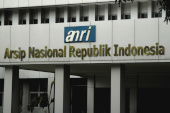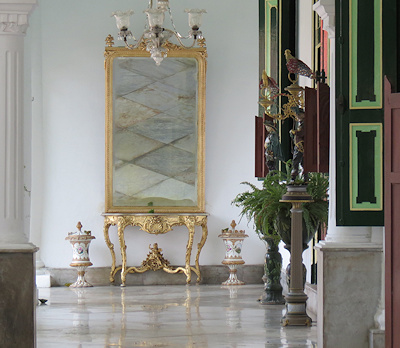Introduction

In today’s globalised world, the Republik of Indonesia, now the sixteenth largest economy in the world and a member of the G20 group, is playing an increasingly crucial and vital role. Its strategic position between the Asian giants, India and China, gives it a pivotal strategic position in world affairs. Indonesia’s participation in global political, economic, cultural and religious developments is a fact and indeed has been so ever since independence in 1945.

A solid future requires a constant reflection on the past. How were the people of Indonesia connected to the wider world? The Indonesian archipelago or the Nusantara has an exceptionally rich history. The range of ethnic groups, regional cultures and unifying mechanisms which make up present-day Indonesia is plain for all to see in all its richness. This historical richness can be researched with the help of a wealth of documents in the Arsip Nasional Republik Indonesia.
This website offers access to thousands of unresearched documents about the history of the Nusantara and its connections to the world at large during the seventeenth and eighteenth centuries. This website also gives access to some older book publications of the former ‘Landsarchief’, beginning with the published Daily Journals of Batavia Castle (1624-1682).
During the seventeenth and eighteenth centuries, the Indonesian archipelago became more and more intertwined with global developments. The pre-colonial world of the Nusantara was at the centre of the intra-Asian trading networks. The outward looking attitude of the Nusantara’s maritime entrepreneurs and tradesmen shaped the character of its people. Intensive interactions between the people of so many islands and regions gave them a sense of common identity.
However, Asian-European interactions gradually changed the region. Yet, the enormous size of the Nusantara made it virtually impossible for any European trading company to control all the lands and the seas. Some parts of the Nusantara’s territories, kingdoms and rulers remained independent throughout the early modern period. Other parts felt victim the increasing pressure of ‘contractual obligations’, economic exploitation and military repression from the Europeans, in particular the VOC.
The old seventeenth and eighteenth-century world of the Nusantara underwent rapid changes during the ‘Age of High Imperialism’, which, in the Indonesian case, lasted 124 years (1818-1942) under the Netherlands East Indies colonial state. Colonial surpression eventually led to the rise of nationalism, independence movements and the fight for freedom in the early twentieth century.
To have a better understanding of the continuities and transformations of the old world of the Nusantara there is only one option: namely a return to the archival sources. The Arsip Nasional Republik Indonesia preserves of 2,5 kilometres of archives created by the General Secretariat of the VOC in Batavia Castle, and the local urban institutions of Batavia. Together these collections are called the ‘VOC archives’.
The VOC archives include literally thousands of letters and documents written by Asians. Unfortunately, the original documents (many beautifully decorated diplomatic letters) written in Javanese, Malay, Sundanese, Chinese, Arab or Persian were not preserved.
The Daily Journals of Batavia Castle (1624-1807) is one of the richest collections. All 165 volumes of around 80.000 digital images will be made available over time on this website. It is appropriate to show a few translated and commented documents in the section of ‘Harta Karun’ or ‘Hidden Treasure’. For this section, international historians are transcribing and translating documents to demonstrate the variety of information in the collections.
We hope that many international scholars, researchers, students and others will make extensive use of this website for their study of Indonesia’s past and present role in World History.
Mustari Irawan and Hendrik E. Niemeijer
Jakarta, 27 September 2013




